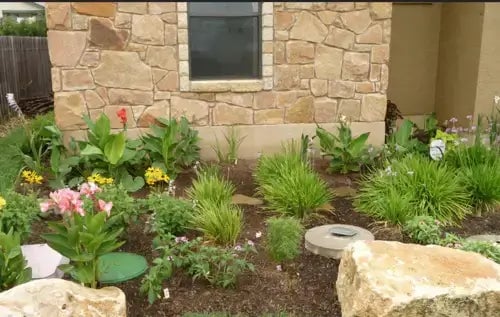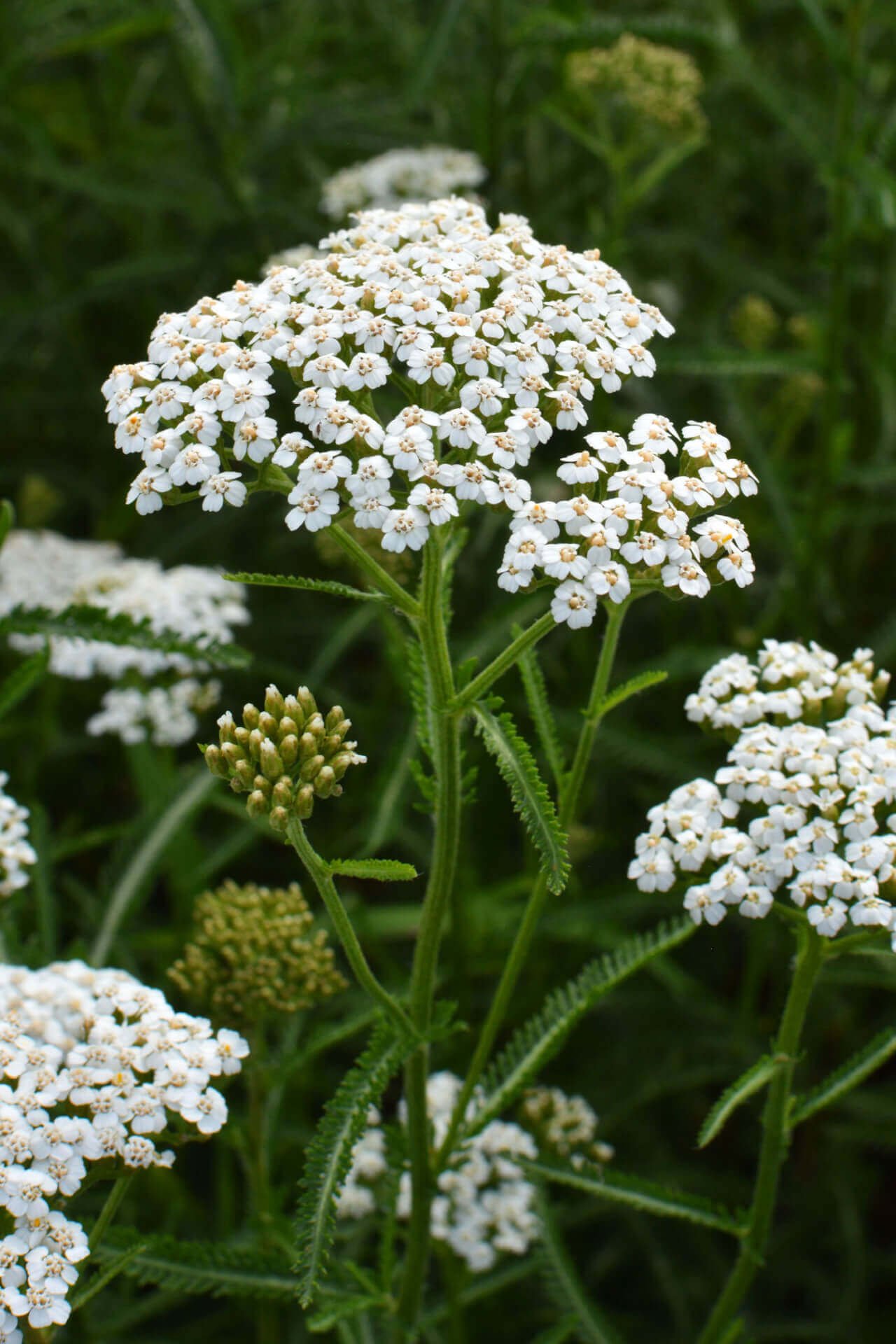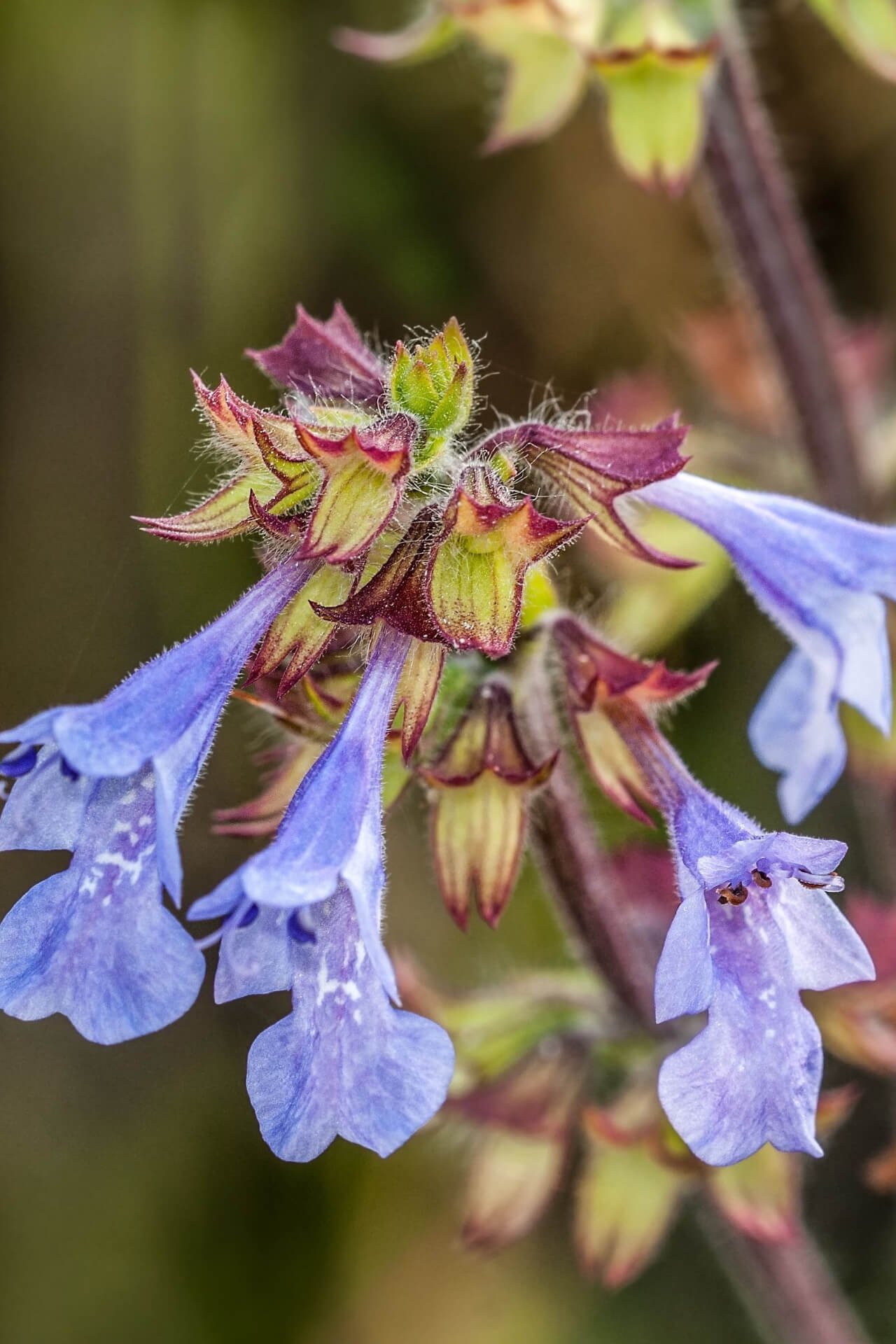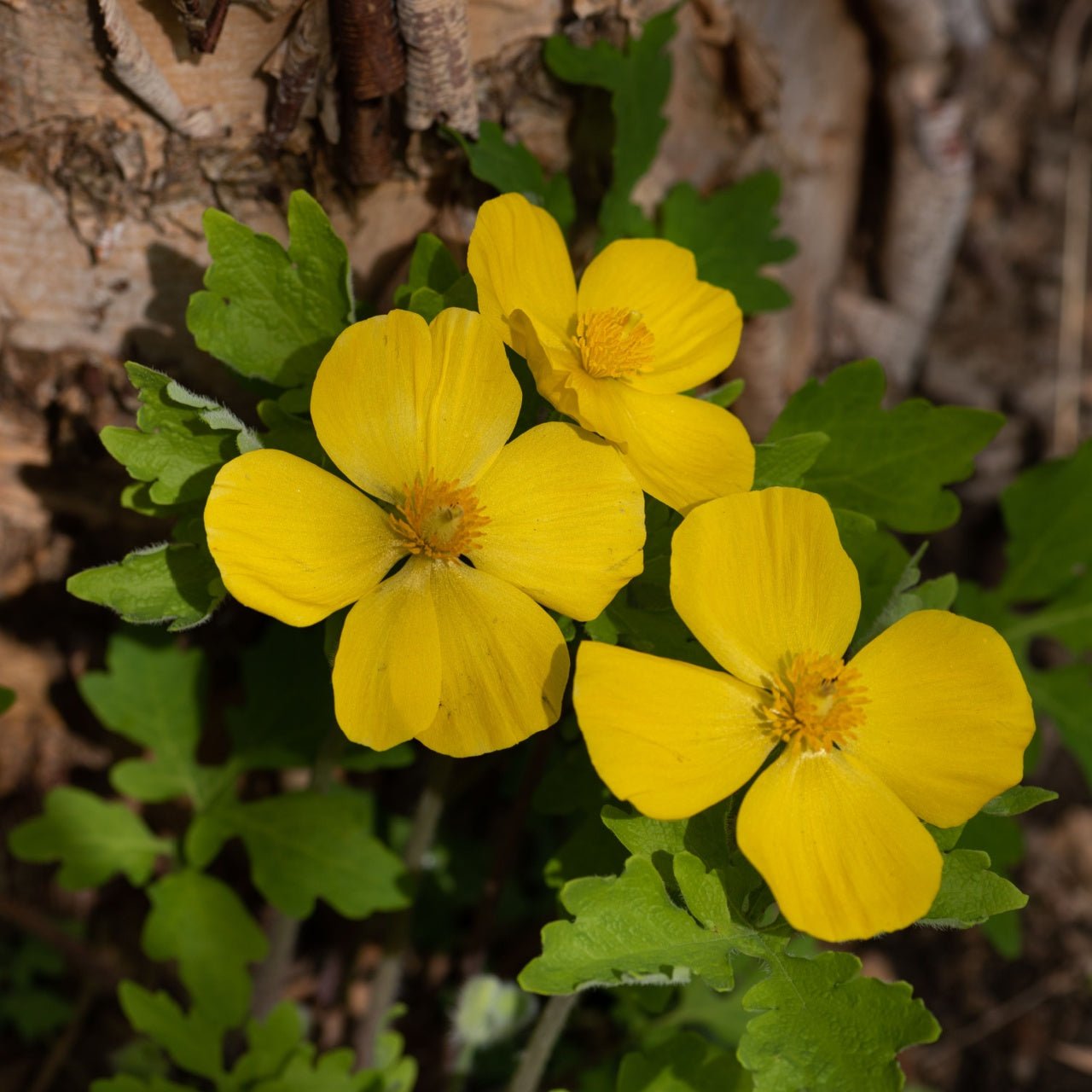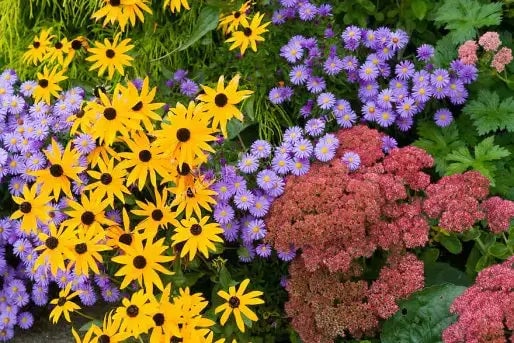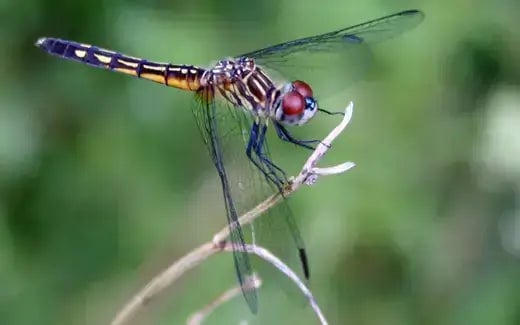10 Drought-Hardy Plants
Wise Landscaping In an era marked by increasing water scarcity, the importance of sustainable gardening practices cannot be overstated. Drought-tolerant plants have become a cornerstone of modern landscaping, offering beauty and functionality while conserving precious water resources. This article will delve into ten exceptional plants that thrive in arid conditions, showcasing their unique characteristics and benefits in fostering resilient, water-efficient landscapes.
Lavender (Lavandula spp.) Lavender's aromatic blooms and silvery foliage make it a favorite among gardeners seeking aesthetic appeal and water efficiency. Originating from the Mediterranean region, this perennial plant requires minimal water once established. Its ability to withstand dry conditions while attracting pollinators like bees and butterflies makes it a must-have in any drought-resistant garden.
Succulents include various plants, such as agaves, sedums, and echeverias. Their fleshy leaves store water, allowing them to survive extended periods without irrigation. These versatile plants come in various colors, shapes, and sizes, making them ideal for creative landscaping.
Yarrow (Achillea spp.) is an excellent choice for water-wise gardening. With its feathery foliage and vibrant flower clusters, yarrow is low-maintenance and adaptable, making it a resilient addition to any landscape.
Russian Sage (Perovskia atriplicifolia) is renowned for its aromatic gray-green foliage and delicate purple flowers. Native to Central Asia, this perennial shrub is highly drought-resistant and thrives in full sun. Its long-lasting blooms and ability to thrive in poor soils make it valuable in water-efficient landscapes.
Agastache (Agastache spp.) Agastache boasts vibrant, nectar-rich flowers that attract pollinators while requiring minimal watering. These hardy perennials come in various colors and sizes, adding visual interest to the garden while supporting local ecosystems.
California Poppy (Eschscholzia californica) The California poppy's golden-orange blooms are a staple of drought-tolerant gardens in the American Southwest. This wildflower self-seeds readily and can thrive in poor, well-draining soil. Its ability to withstand arid conditions while adding a burst of color makes it valuable to any water-efficient landscape.
Oregano (Origanum spp.) Oregano's culinary and ornamental value make it a versatile choice for water-wise gardening. This aromatic herb hails from the Mediterranean and is well-suited for dry conditions. Its low water requirements and resistance to drought make it an easy-to-grow option for novice and experienced gardeners.
Sage (Salvia spp.) He is a member of the Mint family. It encompasses a diverse group of plants with varying foliage colors and flower shapes. Many sage species are well-adapted to drought conditions, thriving in sunny spots with minimal water.
Their aromatic leaves and attractive flowers make them a beloved addition to landscapes focused on water conservation. Cacti Cacti are the most iconic example of drought-resistant plants. With their unique shapes and sizes, these succulents have evolved to store water in their stems, enabling them to survive in arid environments. From the towering saguaro to the prickly pear, cacti offer various options for creating captivating, low-water gardens.
Lantana (Lantana spp.) Lantana's clusters of vibrant flowers, available in a spectrum of colors, add a splash of beauty to drought-tolerant landscapes. Once established, it is remarkably resilient and requires little water. Its ability to attract pollinators and its heat tolerance make it an asset in drought-prone regions.
Conclusion As the world grapples with changing climate patterns and limited water resources, embracing drought-tolerant plants becomes a responsible and practical approach to landscaping.
The ten plants listed are hardy in drought
These landscapes offer a sustainable and visually appealing alternative to traditional high-water-use gardens, demonstrating that beauty and environmental responsibility coexist harmoniously.
By embracing the principles of xeriscaping and selecting the right plant palette, it is possible to craft landscapes that thrive in arid conditions and captivate with their charm. At the heart of drought-tolerant landscaping lies the principle of xeriscaping, a water-efficient approach that seeks to minimize water consumption while maximizing aesthetic appeal. Xeriscaping involves careful planning, soil improvement, mulching, efficient irrigation, and plant selection. The key to success is selecting plants well adapted to the local climate and requiring minimal supplemental watering once established.
Native plants are often excellent for these landscapes, as they have evolved to thrive in specific regional conditions. The magic truly happens when you choose a diverse range of drought-tolerant plants. While some might associate these landscapes with a barren or desert-like appearance, the reality is quite the opposite. An astonishing array of plants boasts vibrant colors, unique textures, and captivating forms.
From the bold reds of the California poppy to the delicate purple blossoms of lavender, drought-tolerant gardens can offer a sensory feast for admirers. Incorporating ornamental grasses with their graceful swaying motions, succulents with their fascinating geometric shapes, and aromatic herbs that release enchanting fragrances as they are brushed against, these landscapes weave an intricate tapestry of natural wonder.
Furthermore, the design principles used in drought-tolerant landscapes are pivotal in their aesthetic appeal. Strategic placement of plants, grouping them by water needs, and creating focal points can elevate the visual impact of the space. Hardscaping elements such as decorative rocks, pathways, and sculptures can add structure and contrast, enhancing the overall design. In addition to their visual allure, drought-tolerant landscapes offer many benefits. Reduced water consumption significantly lowers utility bills and conserves a precious resource. These landscapes require minimal maintenance, which, in turn, reduces the need for pesticides.
Native Plants Are Hardy In Drought
In conclusion, the paradigm of drought-tolerant landscapes challenges the misconception that beauty is a resource-intensive endeavor.
Through thoughtful planning, plant selection, and design, these landscapes can be transformed into captivating works of art that thrive with minimal water. By embracing the principles of xeriscaping and drawing from the rich palette of drought-tolerant plants, we can create environments that enrich our lives aesthetically and contribute to a more sustainable and harmonious coexistence with nature.
Building a Drought-Tolerant Garden Bed
Unpredictable weather patterns and low rainfall make regions ideal for drought-resistant garden beds, which deliver attractive and strong landscaping solutions. A beautiful garden that needs little water can be achieved through suitable soil preparation, water conservation techniques, and proper plant choices. The following steps and essential considerations will guide you through creating the perfect bed for drought-resistant vegetation.
1. Choose the Right Location
The proper location is crucial in establishing a garden bed for dry-weather plants. For a successful garden bed of drought-tolerant plants, find a location that receives a minimum of six hours of sunlight daily because these species perform best in full sun conditions. Choosing a well-draining site for your garden bed is essential because stagnant water after rain can lead to a soggy bed and cause root rot and fungal diseases. When planting in an area that experiences periodic waterlogging, you should raise the bed or enhance the soil structure to drain excess moisture effectively.
2. Prepare the Soil
Preparing soil is essential for all gardens and becomes critical when growing plants that thrive in dry climates. Healthy root systems depend on soil that drains appropriately to avoid prolonged water exposure. Start with loosening soil to a depth of at least 12 inches to establish an optimal growing environment. Roots can spread through loosened soil more efficiently by accessing water and nutrients without resistance. Blend coarse components like sand or fine gravel into the soil to improve drainage. Add a coating of organic material like compost or manure to enhance the soil with necessary nutrients and improve soil structure. Create a loamy soil mixture that maintains sufficient moisture for root absorption while ensuring quick drainage to prevent saturation.
3. Constructing a Raised Bed (Optional but Beneficial)
Raised bed gardening becomes essential when the soil contains excessive clay or sand content. A raised bed enables you to customize your soil mixture and maintain adequate water drainage. Build a basic rectangular or square frame with rot-resistant lumber or bricks and other durable materials. The raised bed sides should stand no less than 12 inches high to give roots enough space to grow downward. The raised bed should contain a mixture of topsoil, coarse sand, compost, and organic materials. Raised beds enable soil to heat up quicker during the springtime, which lengthens your growing period and fosters superior root growth.
4. Mulching for Water Retention
Any garden benefits from mulching techniques, but gardens in arid climates gain the most advantage. To protect them, create a layer of organic mulch like wood chips or crumbled leaves around the base of newly planted plants. The mulch layer regulates soil temperature, reducing water loss and stopping weed growth. Mulching provides dual benefits by conserving water and decreasing garden maintenance because weeds absorb valuable plant moisture. For a modern garden design using inorganic mulch, you can choose stones or pea gravel, which help with drainage but do not offer the nutritional benefits that organic mulch provides.
5. Drip Irrigation and Smart Watering
Your selected plants can handle dry conditions but may require extra water during hot and dry periods to help young plants grow or maintain their health. Hoses and irrigation systems deliver water straight to plant roots, preventing foliage saturation and evaporation losses. Place irrigation lines under the mulch layer to direct water straight to the soil for optimal efficiency. Overhead watering should be avoided because it wastes water, promoting fungal growth and creating uneven soil moisture levels. Water your plants in the early morning hours to allow them to absorb more moisture before the heat of the day increases.
6. Selecting the Right Plants
Gardens that thrive without water need plants that flourish under dry circumstances. Rosemary, thyme, lavender, and sage are among the Mediterranean herbs that prosper in sunny locations with good drainage while offering gardeners aromatic benefits and seasonal flowers. Sedum, echeveria, and agave succulents thrive in extremely dry areas because they store water in their leaves. Plants evolved in your local climate usually offer the most effective long-term gardening results. Native wildflowers, shrubs, and ornamental grasses develop root systems that penetrate deeply below the topsoil to find water. Plant integration creates diverse garden aesthetics and reduces the need for extra watering.
7. Long-Term Maintenance
Drought-tolerant plants require low maintenance, but they still need periodic attention. Conduct frequent inspections of your garden for stress indicators like drooping leaves or discoloration, and take immediate action against any pests or diseases you find. Monitor your garden closely to eliminate weeds quickly because they compete with your plants for essential water resources. Fresh organic mulch layers should be applied during either spring or fall to preserve soil texture and insulation.
Implement these methods—selecting an ideal spot, preparing suitable soil followed by mulch application, and choosing plants with low water needs—to develop a garden bed that thrives during dry conditions and saves our most valuable natural resource. Through careful planning and management, your garden will become a lively oasis of color and texture that supports wildlife and contributes to sustainability.


